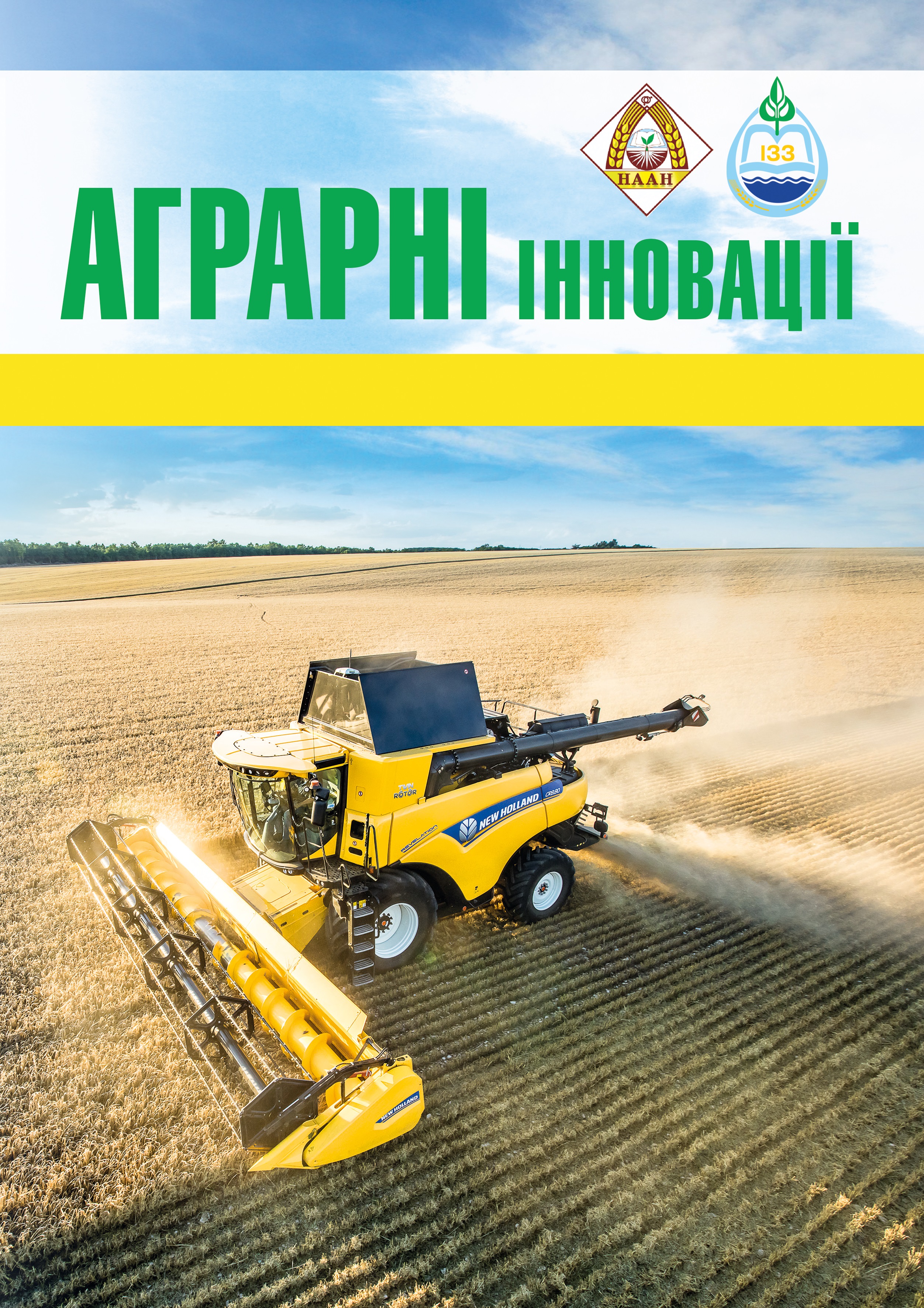Influence of microfertilizers and growth regulators on the productivity of corn hybrids in the North of Ukraine
Abstract
The use of growth stimulants and microfertilizers is an important element of corn growing technology. The study of technological measures for the use of trace elements and growth regulators in the nutrition of maize plants, as well as the study of their effectiveness when used in combination with microfertilizers on the background of mineral fertilizers is an important task. Goal. To study the influence of different combinations of microfertilizers and growth regulators on the productivity of maize hybrids and grain quality indicators when grown in the North of Ukraine. The task of the study was to establish the influence of the studied factors on the duration of the phenological period, yield dynamics and quality of corn grain. Methods. Field experiment, laboratory, analytical, measuring and weighing, mathematical and computational. Results. The article presents and substantiates the optimal agrotechnologies for the use of microfertilizers and the growth of regulators that ensure high productivity of corn crops in the north of Ukraine. The results of field experimental studies show that the use of foliar feeding of corn in the phase of 5–7 leaves with a tank mixture of micronutrients with a regulator helped to stimulate growth processes in plants, increased their resistance to adverse environmental stressors, improved performance, improved performance and the level of crop yield. When using a combination of drugs Basfoliar Active SL and Gulliver Stimulus increased fat and protein content. The combined use of liquid microfertilizers Rostok corn + Basfoliar Aktiv SL provided a higher content of starch in the grain. Conclusion. The use of foliar fertilization of corn with microfertilizers and treatment of crops with growth regulators helps to reduce the growing season of plants, increase the yield and quality of corn grain in the north of Ukraine.
References
2. Надь Я. Кукурудза. Вінниця : ФОП Корзун Д.Ю., 2012. 580 с.
3. Пащенко Ю.М., Борисов В.М., Шишкіна О.Ю. Адаптивні і ресурсозбережні технології вирощування гібридів кукурудзи : монографія. Дніпропетровськ : АРТ-ПРЕС, 2009. 224 с.
4. Пелех Л.В. Формування продуктивності кукурудзи залежно від обробки стимуляторами росту рослин в умовах Правобережного Лісостепу. Сільське господарство та лісівництво. 2017. № 5. С. 54–61.
5. Мамчур О.В. Фізіолого-біохімічні особливості формування продуктивності кукурудзи за впливу регуляторів росту рослин. Науковий вісник ЛНУВМБТ імені С.З. Гжицького. 2013. Т. 15. № 1 (55). С. 152–160.
6. Циков В.С. Ефективність позакореневого підживлення кукурудзи мікроелементними препаратами сумісно з азотним мінеральним добривом. Бюл. Ін-ту сільського господарства степової зони НААН України. 2016. № 11. С. 23–27.
7. Молдован Ж.А., Собчук С.І. Оцінка показників індивідуальної продуктивності рослин кукурудзи за допосівної обробки насіння та позакореневого підживлення. Зернові культури. 2018. Т. 2. № 1. С. 101–108.
8. Лавриненко Ю.О., Гож О.А. Ріст і розвиток рослин гібридів кукурудзи ФАО 180–430 за впливу регуляторів росту і мікродобрив в умовах зрошення на Півдні України. Зрошуване землеробство : збірник наукових праць. 2016. Вип. 65. С. 128–131.
9. Циков В.С. Ефективність застосування макро- і мікродобрив при вирощуванні кукурудзи. Зернові культури. 2017. Т. 1. № 1. С. 75–79.
10. Лебідь Є.М., Циков В.С., Пащенко Ю.М. Методика проведення польових дослідів з кукурудзою. Дніпропетровськ, 2008. 27 с.
11. Доспехов Б.А. Методика полевого опыта. Москва : Агропромиздат, 1985. 351 с.






